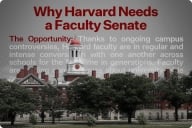You have /5 articles left.
Sign up for a free account or log in.
At Marquette, university officials are using the book Demographics and the Demand for Higher Education, published in 2018 by Nathan Grawe, as their guide to realignment. Grawe’s book describes declining birth rates within multiple demographic groups, leading to a decline in the demand for higher education. Those changes mean the university needs to plan for a smaller Marquette, officials have said.
“We do not want to build a university on the hope that students will come,” Marquette provost Kimo Ah Yu is quoted as saying in approved Academic Senate meeting minutes.
A recently approved Marquette budget document cuts 225 of the university’s 2,811 faculty and staff, Wisconsin Public Radio reported. Expenses will be cut to the tune of $41 million compared to last fiscal year, and a surplus of $12 million "will provide room for investing in projects of strategic priority,” the document says.
"Cuts, Cuts, Cuts," by Lilah Burke, Dec. 14, Inside Higher Ed
First, we should acknowledge that the real story is always more complicated and nuanced than what we read in a single news story. While it is credible to me that Marquette was "informed" by Grawe's excellent Demographics and the Demand for Higher Education, I suspect that a more complex series of calculations drove the school's decision to cut 225 out of 2,811 faculty and staff roles.
We should also recognize how painful the loss of faculty and staff jobs is to everyone involved and be quick to provide support and slow to offer judgment.
Therefore, this blog post is less about what is going on at Marquette (or the other schools mentioned in "Cuts, Cuts, Cuts") and more to make a general point about the uses (and misuses) of demographic projections in guiding faculty/staff employment decisions.
Part of the dog I have in this fight is my training -- as my academic background is in social demography. Demographic analysis is a powerful lens for informing academic strategic decision making. We should always be talking more about population trends, levels and shifts. However, anyone trained in demography will be extremely uncomfortable with the idea that demographics must necessarily drive policy (or institutional) choices. Demographic analysis is a tool, not an answer.
Perhaps the best example of what can go wrong if demographics are used as a rationale above all else for policy making is China's disastrous and immoral one-child policy. That policy, which China has now repudiated, resulted in both extreme levels of coercion exerted on the country's citizens, as well as an overrapid fertility decline that will likely limit China's economic options in the future. In short, not only was the one-child policy horrible from the perspective of individual freedom and choice, the country will now almost certainly grow old before it grows wealthy.
In the case of higher education's demographic future, there is nothing in these population projections that indicates that colleges and universities must abandon their core values in the face of future trends. These core values may include both a commitment to offering a broad liberal arts education, as well as a commitment to the faculty and staff who make up our institutions.
Yes, we will see an acceleration of the decline in the cohort sizes of high school graduates in the years to come -- with these smaller age cohorts concentrated in the Northeast and Midwest. And yes, a diminishing pool of traditionally college-age men and women will drive down demand for higher education at some residential (and tuition-dependent) institutions in some areas.
These demographic trends, however, are not higher education destiny. Schools have a range of responses available to them to adjust to the new demographic reality. Cutting faculty and staff jobs will make it more difficult, not less, to make these adjustments. Every college and university should be looking at options to meet the broad and overall growing national demand for education and credentialing. New ways of constructing and delivering education, such as alternative credentials and online learning at scale, can bring many learners into higher education.
Should schools be looking at offering generous early retirement incentives to their rapidly aging faculty and staff populations? Sure. The aging of the academic workforce is the other side of the coin of declining fertility, outmigration and smaller cohorts of potential students. An enormous amount of experience and talent is about to walk out of our colleges and universities' doors as the baby boomers (1946 to 1964) move through retirement age. Generous and finely crafted retirement incentive packages can obviate much of the need for wholesale university staffing cuts while retaining the campus goodwill that will be necessary to positively shift to new models of educational design and delivery.
Demographers have learned that values should never take a back seat to population trends when it comes to making big decisions. It would be a shame if demographic trends were being utilized as arguments for making institutional choices that contrast with our most deeply held beliefs.








